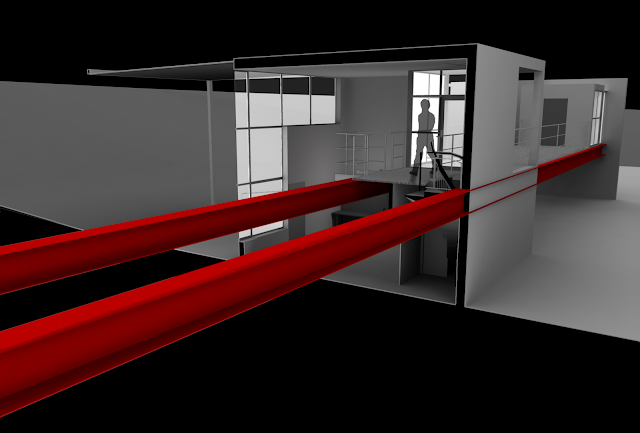My artist creates installations that bring out the good in people, and his art wouldn't be considered art if people didn't interact with it. He (hypothetically) is moving to State College from Alaska because he feels that there isn't enough audience/participants for his art and the harsh weather hinders his changes to get his installations into the public, so I thought of implementing a sort of outdoor "stage" element because he wanted to have more exposure. This transformed into the bridge that is highlighted throughout my renders. Also, I decided to remove the artist's personal study from the main house because then he can interact with both sides of the site while traversing the bridge to and from it.
My design started off as very functional, which is reacting to the level of functionality that a factory requires. In order to address the dual-nature of the site,
Here's the final product (animation links at the very end):
















































